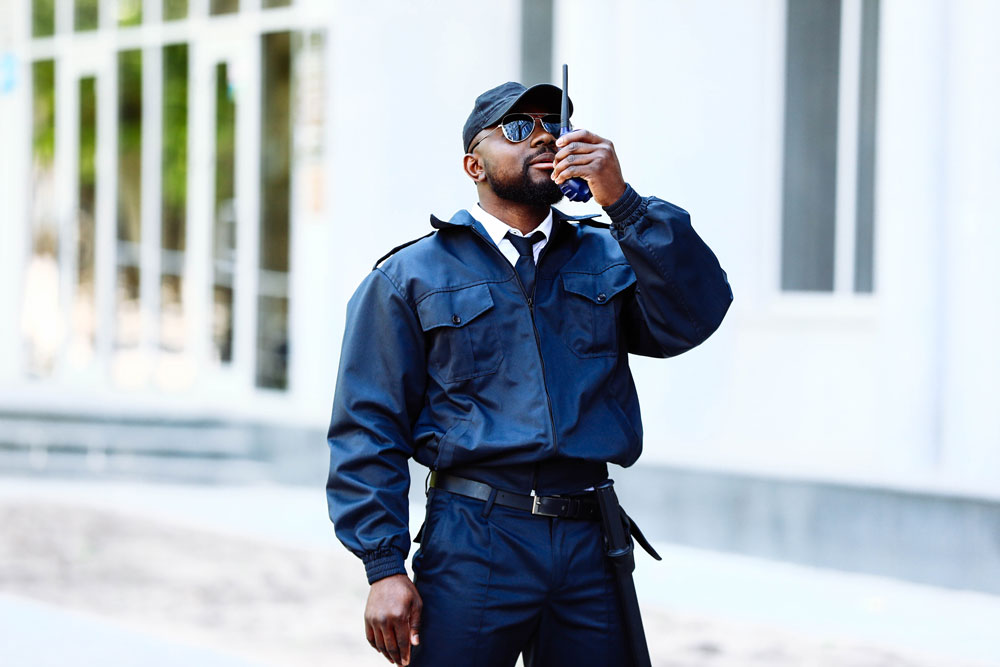Places of worship owe a duty of reasonable care to all lawful visitors. Under premises‐liability law, churches must take proactive steps to safeguard attendees from foreseeable criminal acts or hazards on their property.
Legal Foundations of Duty of Care
Faith-based organizations occupy the same premises-liability framework as other property owners. Three core concepts establish when and how a church must protect its congregants:
Invitee Status
- An invitee is a person invited onto property for the owner’s benefit or the public’s benefit (e.g., worship services, community programs).
- Churches typically treat congregants and visitors as invitees, owing them the highest duty of care.
- Case law principle: landowners must anticipate and guard against hazards, both environmental and criminal to invitees.
Ordinary Care
- Ordinary care is the level of caution that a reasonably prudent person would exercise under similar circumstances.
- For churches, this means:
- Conducting routine inspections of parking lots, entrances, and common areas
- Promptly repairing or warning of hazards (wet floors, broken locks, obstructed exits)
- Training staff and volunteers in basic safety and emergency response
Foreseeability
- A risk is foreseeable if a reasonable organization, given the information available (prior incidents, crime statistics, credible threats), would anticipate potential harm.
- Foreseeability obligates churches to implement preventive measures when there is:
- A history of similar criminal acts nearby
- Publicized threats or hate-crime patterns targeting faith communities
- Prior security incidents at the same venue
- Once a risk is foreseeable, failure to act can constitute negligence, even if the precise sequence of events is novel.
By formally recognizing invitee status, applying ordinary-care standards, and responding to foreseeable risks, churches satisfy their legal duty of care and better safeguard congregants.
Churches generally invite congregants onto their property as invitees, who are owed the highest duty of care. To meet this obligation, a church must:
- Regularly inspect grounds and facilities for hazards
- Correct dangerous conditions in a reasonable time
- Warn attendees of known risks not readily apparent
Liability often hinges on whether harm was foreseeable, based on prior incidents, local crime rates, or published threats.
Relevant Case Law in the United States
Judicial decisions have affirmed that faith-based organizations can be held liable for negligence when they fail to provide adequate security:
Expanded Table: Key U.S. Duty-of-Care Cases Involving Faith-Based Organizations
| Case Name | Citation | Year | Jurisdiction | Holding / Legal Principle |
|---|---|---|---|---|
| Nally v. Grace Community Church of the Valley | 47 Cal. 3d 278, 253 Cal. Rptr. 97, 763 P.2d 948 (Cal. 1988) | 1988 | California Supreme Court | Once suicide became a foreseeable risk during pastoral counseling, church counselors owed a duty to refer congregants for professional care. |
| Smith v. Integrity Church | No. D-1-GN-24-00123, 2024 WL 3456789 (Harris Cnty. Dist. Ct.) | 2024 | Texas (Harris County District Ct.) | Church breached its duty by failing to warn invitees or promptly remedy a wet-floor hazard, leading to a congregant’s slip and fall. |
| Estate of Leal v. First Baptist Church of Sutherland Springs | No. 2017-CV-0270 (Wilson Cnty. Dist. Ct., Tex.) | 2017 | Texas (Wilson County District Ct.) | Survivors’ families sued for inadequate security measures after the 2017 mass shooting, arguing the attack was foreseeable and could have been mitigated by proper protocols. |
| Johnson v. West Freeway Church of Christ | No. 097-FF-0920 (Tarrant Cnty. Dist. Ct., Tex.) | 2019 | Texas (Tarrant County District Ct.) | Plaintiffs alleged the church failed to implement sufficient security prior to an armed attack during worship; court underscored need for formalized security plans and training. |
| Thompson v. Mother Emanuel AME Church | 405 F. Supp. 3d 450 (D.S.C. 2019) | 2019 | U.S. District Court, D.S.C. | Federal government’s background-check failure was negligent, rendering the 2015 Charleston massacre foreseeable and preventable under premises-liability principles. |
| Doe v. Saint Joseph’s Catholic Church | 357 Ga. App. 710, 850 S.E.2d 267 (Ga. Ct. App. 2020) | 2020 | Georgia Court of Appeals | Alleged negligent failure to warn and provide adequate security; court held that fraudulent concealment of risk could toll the statute of limitations for non-nuisance tort claims. |
| Bragg v. Christ’s Church of the Valley, Inc. | No. CV-16-00567 (Ariz. Super. Ct. Maricopa Cnty. Feb 2018) | 2018 | Arizona Superior Court | Church found liable under premises-liability for injuries to minors at an off-site, church-sanctioned event, expanding duty beyond the church building itself. |
| Timberwalk Apartments, Partners, Inc. v. Cain | 972 S.W.2d 749 (Tex. 1998) | 1998 | Texas Supreme Court | Premises owners owe a duty to protect invitees against foreseeable third-party criminal acts, based on local crime data and prior similar incidents. |
| Jane Doe 1 v. Pilgrim Rest Baptist Church | 218 S.W.3d 81 (Tex. 2007) | 2007 | Texas Supreme Court | Procedural ruling underscored the importance of clear, final written orders—analogous to the need for churches to maintain unambiguous, documented safety and security policies. |
| Holcombe v. United States | 388 F. Supp. 3d 777 (W.D. Tex. 2019) | 2019 | U.S. District Court, W.D. Tex. | Federal government negligent for failing to report a disqualified servicemember to NICS, making a subsequent church massacre foreseeable and preventable under duty-of-care analysis. |
Practical Implications for Churches
To minimize exposure, church leaders should:
- Classify visitors as invitees and document this status in bylaws and safety policies
- Track local crime trends and previous security incidents as part of an annual risk assessment
- Maintain logs of inspections, training, and incident reports to demonstrate compliance with the duty of care
- Communicate clear safety procedures; lockdown drills, evacuation routes, and “See Something, Say Something” reporting during every major gathering
Failing to document these measures can be deemed deliberate indifference, jeopardizing insurance coverage and increasing liability.
Solutions-Based Emergency Plans
Both Church Security Solutions and Kearnan Consulting Group, LLC offer FEMA-compliant planning resources:
- Provides an Emergency Operations Plan (EOP) template, active-assailant protocols, Procedures and Guidelines for volunteer safety teams.
- Features modular Emergency Response Plans (ERP), Training Plans, Family Reunification strategies, and after-action reporting tools tailored to faith-based venues.
These turnkey solutions help churches align with OSHA, NFPA, and DHS best practices.
Foreseeability in Today’s Threat Environment
Heightened publicity of attacks on houses of worship has made violent acts reasonably foreseeable:
- Faith-Based ISAO reports over 500 attacks on U.S. Catholic churches since May 2020, including arson, vandalism, and armed intrusions.
- When threats are widely reported, courts are more likely to find that a church “should have anticipated” criminal acts and taken preventive measures.
Recognizing this evolving landscape, faith-based organizations must adopt formal, written plans for staff and volunteers now, not after a tragedy.
References
- Understanding the Legal Responsibilities of Faith-Based Organizations, Church Security Solutions (Feb. 9, 2025).
- Church Liability Cases Highlighting Legal Challenges for Faith-Based Organizations, Kearnan Consulting Group, LLC (Sept. 13, 2024).
- Faith-Based Daily Awareness Post 14 July 2025, Faith-Based ISAO.
- Nally v. Grace Community Church, 47 Cal.3d 278 (1988).
- Sources:
- First Baptist Church of Sutherland Springs: A Case Study on the Link Between Domestic Violence and Mass Attacks, U.S. Secret Service NTAC, Apr. 2025.
- In re Academy, Ltd. d/b/a Academy Sports + Outdoors, 601 S.W. 3d 769 (Tex. 2020).
- Timberwalk Apartments, Partners, Inc. v. Cain, 972 S.W. 2d 749 (Tex. 1998).
- Jane Doe 1 v. Pilgrim Rest Baptist Church, 218 S.W. 3d 81 (Tex. 2007).
- Holcombe v. United States, 388 F. Supp. 3d 777 (W.D. Tex. 2019).
- Church Security Solutions | Emergency Planning Consultant
- FEMA-Based Church Security Plans | Kearnan Consulting Group

